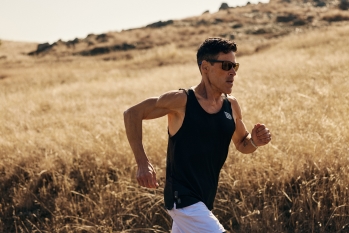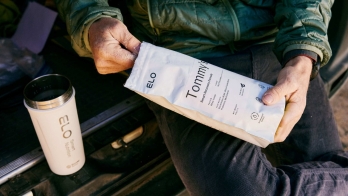Training for a triathlon: the best nutrition and recovery strategies for triathletes
Training for a triathlon requires more than just dedication and willpower – what you put in your body also makes a difference. Here are the best nutrition and recovery strategies to incorporate into your triathlon training plan so you can feel your best on race day.
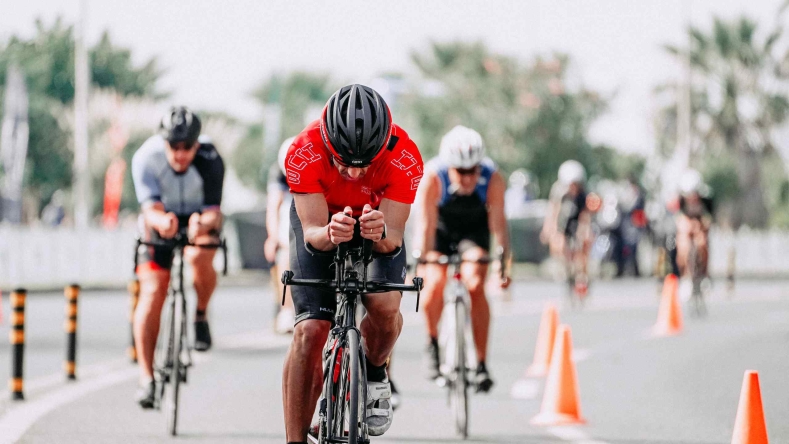
Contents
What is a triathlon? How long is a triathlon? Let Elo Smart Recovery be part of your triathlon training plan What should you eat when training for a triathlon? Importance of post-workout recovery for triathletes Other helpful articles to read when training for a triathlon Summary Key takeawaysPreparing for a triathlon requires dedication, discipline, and a strategic approach. Whether you are a seasoned triathlete or a newcomer to the world of multisport events, understanding the crucial aspects of training, nutrition, and recovery is paramount to your success.
In this article, we’re turning to science to better understand how certain nutrition and recovery strategies can impact training for a triathlon. From custom recovery blends
So, lace up your running shoes, inflate your bike tires, and let’s dive headfirst into the world of triathlon training.
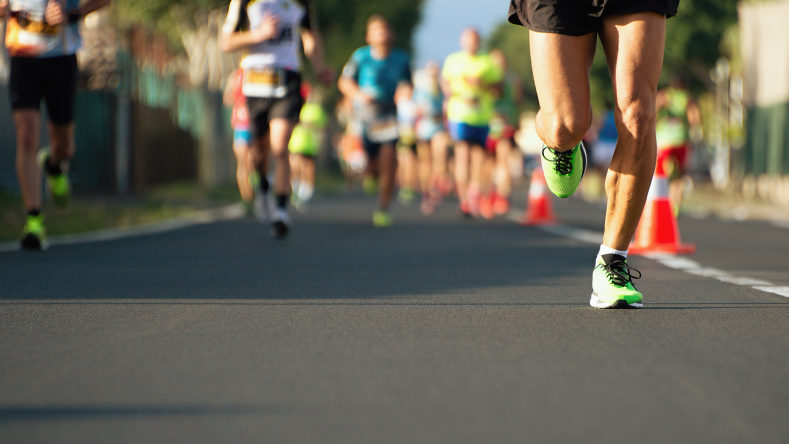
What is a triathlon?
A triathlon is a multi-sport endurance event that includes swimming, cycling, and running, with athletes transitioning from one to the next as quickly as possible. Participants often train extensively in all three disciplines to prepare for the race and transition smoothly between each stage.
There are various types and distances of triathlons (such as a super sprint triathlon, sprint triathlon, Olympic triathlon, half Ironman, and full Ironman triathlon) that cater to different skill levels and fitness abilities.
How long is a triathlon?
Triathlon distances will vary depending on the type of triathlon you want to do. Here is a breakdown of the distances you can expect from each one.
Mini triathlon
Super sprint triathlon distances
400m swim
10km bike
2.5km run
Sprint triathlon distances
750m swim
20km bike
5km run
Olympic triathlon distance
1.5km swim
40km bike
10km run
Half Ironman distance
1.9km swim
90km bike
21.1km run
Ironman triathlon distances
3.8km swim
180km bike
42.2km run
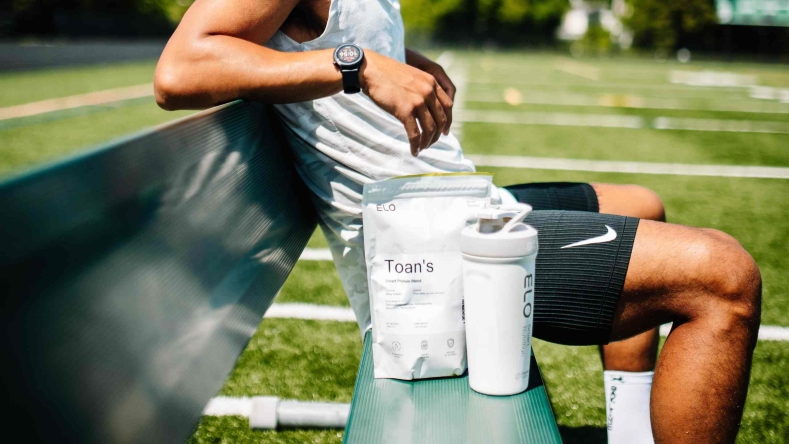
Let Elo Smart Recovery be part of your triathlon training plan
When training for a triathlon, your nutrition and recovery needs are paramount. And since we all have different nutritional needs and goals, you need a product that will work for you, not against you.
That’s where Elo Smart Recovery
Your personalized blend is made precisely for you with functional boosts (like supergreens, turmeric, and probiotics) to meet your nutrition needs. It is optimized to deliver the right amount of protein and key amino acids after each workout to help you recover faster.
Want to know how your custom recovery product fits into a triathlon training plan? Get started today
What should you eat when training for a triathlon?
Proper nutrition plays a vital role in training for a triathlon as it fuels your body, aids in recovery, and supports optimal performance. Here are some key considerations for your nutrition plan when training for a triathlon.
Disclaimer: It's important to remember that nutrition needs can vary for everyone. Consider consulting with a sports nutritionist or registered dietitian who can assess your specific needs, training intensity, and dietary preferences to create a personalized nutrition plan.
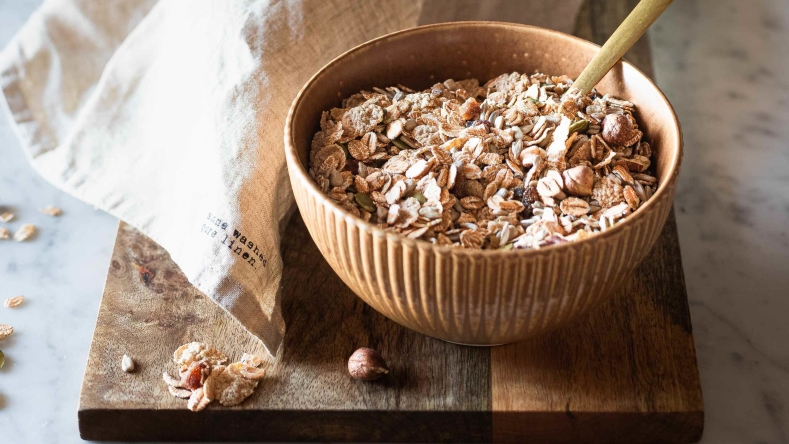
Carbohydrates
Carbohydrates are king when it comes to fueling your triathlon endeavors because they are the only macronutrient that can be broken down rapidly enough to provide energy during higher-intensity (anaerobic) exercise [ 1
Working muscles can also utilize carbs both fast and efficiently. Given this, the availability of carbohydrates in the body can profoundly affect your energy levels, endurance, performance, and even recovery. Not having enough carbs on board can have detrimental effects on your body composition, physical performance, and recovery — whereas increased carbohydrate intake before, during, and after exercise can have performance and recovery benefits [ 2
With Elo Smart Recovery, there are two types of carbohydrates for boosts: branched cyclic dextrin and oat starch. Both types can be helpful for athletes looking to replenish energy stores during and after exercise. The amount of each you receive in your blend will be determined based on your energy levels, activity data, and questionnaire answers.
Dosing recommendations
Endurance athletes training two or more hours/day will likely need to consume >60% calories from carbohydrates (5–8 g/kg/day) [ 3
Pre-workout: If you plan to exercise for one hour or longer, aim to consume 1-4 g of carbs/kg of body weight 1-4 hours before exercise [
2
].During exercise: For 1-2 ½ hours of exercise, athletes will benefit from consuming 30-60 g of carbohydrates/hour, and for events lasting >2 ½ hours, up to 60-90 g/hr may be sufficient [
4
].Post-workout: Athletes should aim to consume 1.0-1.2 g/kg per hour for the first 4-6 hours of recovery [
3
].
Learn more about how many carbs you should eat before, during, and after exercise in
this informative article
.
Dietary sources
By including the right types and amounts of carbohydrates in your diet, you can maintain stable energy levels and promote overall well-being while fueling your fitness goals. Some dietary examples include:
Simple carbohydrates (such as honey, fruit juice, sports drinks, gels, energy bars, and refined grains like bread, rice, and pasta)
Whole grains (such as brown rice, quinoa, rolled oats, and 100% whole grain bread or pasta)
Fruits containing fiber (such as bananas, apples, and berries)
Starchy vegetables (such as sweet potatoes, carrots, peas, and corn)
Legumes (such as beans and lentils)

Protein
Protein has several key benefits for endurance athletes. For example, it can improve endurance, reduce muscle damage and soreness, enhance muscle recovery, improve body composition, and enhance satiety [ 5 6 7 8
Consuming adequate amounts of protein helps the body meet the increased demands of endurance exercise, repair and build new muscle tissue, prevent injury, and promote overall strength [ 9
Dosing recommendations
Endurance athletes need more protein than the average individual because these activities increase metabolic needs and break down muscle tissue [ 10 11
With Elo Smart Recovery, you will get precise dosing recommendations to help refuel after each workout. Your unique blend is determined using your data from wearables and activity apps and your dietary preferences and goals. Your information is then matched with the latest scientific research to determine a blend of ingredients that both maximizes post-workout recovery and supports your health goals.
Dietary sources
Experts recommend endurance athletes focus on whole food sources of protein that contain all of the essential amino acids, as these are key to stimulating muscle protein synthesis and recovery [ 11
Foods that contain high-quality protein include:
Eggs
Dairy
Lean meat
Poultry
Fish
Beans
Lentils
Peas
Soybeans
Tofu

Hydration
Studies continue to show that maintaining proper hydration levels is paramount for athletes and active people alike, as it plays an essential role in performance, injury prevention, and recovery [ 12
Learn more about the importance of hydration in this article.
Dosing recommendations
Experts have found that an adequate fluid intake for men is ~15.5 cups (3.7 liters) and ~11.5 cups (2.7 liters) for women [ 13
How to stay hydrated
You can stay hydrated by drinking post-workout beverages (preferably with electrolytes), consuming hydrating foods, carrying hydration packets, and replenishing fluid stores before, during, and after a workout.
Elo Smart Recovery has electrolytes as a functional boost to help you stay hydrated and promote normal muscle function, contraction, and relaxation.
Importance of post-workout recovery for triathletes
Studies show that strenuous physical activity (including strength training, high-intensity exercise, or prolonged endurance exercise) damages muscle fibers, depletes energy and fluid stores, increases inflammation, and dampens your immune system [ 14
However, with proper recovery practices, you can help your body recover more quickly and effectively between workouts while maximizing those all-important training adaptations that make you stronger, faster, and fitter. When done right, recovery can also help prevent injury and reduce exercise-related inflammation and immune suppression.
Check out these articles to learn more about how to recover better.
Other helpful articles to read when training for a triathlon
Summary
Preparing for a triathlon requires more than dedication and training – studies continue to show that specific nutrition and recovery strategies are also paramount to optimizing performance during triathlon training.
By getting enough protein, carbohydrates, and fluids while training, you can achieve faster recovery times, reduce the risk of injury, and further drive outcomes. Other recovery strategies include foam rolling, rest days, taking certain supplements (like Elo Smart Recovery
Disclaimer: The text, images, videos, and other media on this page are provided for informational purposes only and are not intended to treat, diagnose or replace personalized medical care.
Key takeaways
A triathlon is a multi-sport endurance event that includes swimming, cycling, and running.
Focus on getting enough protein, carbs, and fluids while training for a triathlon, as they play a vital role in fueling your body, boosting recovery, and supporting optimal performance.
When done right, recovery can help prevent injury and reduce exercise-related inflammation and immune suppression.
Elo Smart Recovery
is a custom blend tailored to your body’s needs to drive outcomes and support your triathlon training plan, as well as your unique health and fitness goals.
References
Kanter, M. (2018). High-quality carbohydrates and physical performance. Nutrition Today, 53(1), 35–39.
https://doi.org/10.1097/nt.0000000000000238
Thomas, D. T., Erdman, K. A., & Burke, L. M. (2016). Position of the Academy of Nutrition and Dietetics, dietitians of Canada, and the American College of Sports Medicine: Nutrition and Athletic Performance. Journal of the Academy of Nutrition and Dietetics, 116(3), 501–528.
https://doi.org/10.1016/j.jand.2015.12.006
Kerksick, C. M., Wilborn, C. D., Roberts, M. D., Smith-Ryan, A., Kleiner, S. M., Jäger, R., Collins, R., Cooke, M., Davis, J. N., Galvan, E., Greenwood, M., Lowery, L. M., Wildman, R., Antonio, J., & Kreider, R. B. (2018). ISSN Exercise & Sports Nutrition Review update: Research & recommendations. Journal of the International Society of Sports Nutrition, 15(1).
https://doi.org/10.1186/s12970-018-0242-y
Burke, L. M., Hawley, J. A., Wong, S. H., & Jeukendrup, A. E. (2011). Carbohydrates for training and competition. Journal of Sports Sciences, 29(sup1).
https://doi.org/10.1080/02640414.2011.585473
Kerksick, C. M., Arent, S., Schoenfeld, B. J., Stout, J. R., Campbell, B., Wilborn, C. D., Taylor, L., Kalman, D., Smith-Ryan, A. E., Kreider, R. B., Willoughby, D., Arciero, P. J., VanDusseldorp, T. A., Ormsbee, M. J., Wildman, R., Greenwood, M., Ziegenfuss, T. N., Aragon, A. A., & Antonio, J. (2017). International Society of Sports Nutrition Position Stand: Nutrient Timing. Journal of the International Society of Sports Nutrition, 14(1).
https://doi.org/10.1186/s12970-017-0189-4
Campbell, B., Kreider, R. B., Ziegenfuss, T., La Bounty, P., Roberts, M., Burke, D., Landis, J., Lopez, H., & Antonio, J. (2007). International Society of Sports Nutrition Position Stand: Protein and exercise. Journal of the International Society of Sports Nutrition, 4(1).
https://doi.org/10.1186/1550-2783-4-8
Murphy, C. H., Hector, A. J., & Phillips, S. M. (2014). Considerations for protein intake in managing weight loss in athletes. European Journal of Sport Science, 15(1), 21–28.
https://doi.org/10.1080/17461391.2014.936325
Pesta, D. H., & Samuel, V. T. (2014). A high-protein diet for reducing body fat: mechanisms and possible caveats. Nutrition & metabolism, 11(1), 53.
https://doi.org/10.1186/1743-7075-11-53
Pasiakos, S. M., McLellan, T. M., & Lieberman, H. R. (2014). The effects of protein supplements on muscle mass, strength, and aerobic and anaerobic power in healthy adults: A systematic review. Sports Medicine, 45(1), 111–131.
https://doi.org/10.1007/s40279-014-0242-2
Kato, H., Suzuki, K., Bannai, M., & Moore, D. R. (2016). Protein requirements are elevated in endurance athletes after exercise as determined by the indicator amino acid oxidation method. PLOS ONE, 11(6).
https://doi.org/10.1371/journal.pone.0157406
Campbell, B., Kreider, R. B., Ziegenfuss, T., La Bounty, P., Roberts, M., Burke, D., Landis, J., Lopez, H., & Antonio, J. (2007a). International Society of Sports Nutrition Position Stand: Protein and exercise. Journal of the International Society of Sports Nutrition, 4(1).
https://doi.org/10.1186/1550-2783-4-8
Judge, L. W., Bellar, D. M., Popp, J. K., Craig, B. W., Schoeff, M. A., Hoover, D. L., Fox, B., Kistler, B. M., & Al-Nawaiseh, A. M. (2021). Hydration to Maximize Performance and Recovery: Knowledge, Attitudes, and Behaviors Among Collegiate Track and Field Throwers. Journal of human kinetics, 79, 111–122.
https://doi.org/10.2478/hukin-2021-0065
Mayo Foundation for Medical Education and Research. (2022, October 12). How much water do you need to stay healthy?. Mayo Clinic.
https://www.mayoclinic.org/healthy-lifestyle/nutrition-and-healthy-eating/in-depth/water/art-20044256
Nieman, D. C., & Wentz, L. M. (2019). The compelling link between physical activity and the body's defense system. Journal of sport and health science, 8(3), 201–217.
https://doi.org/10.1016/j.jshs.2018.09.009

